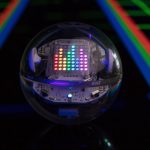In the era of 1:1, many educators (and parents) hold tight to students reading “real” books, such as books bound by a publisher. Others say we need to “get with the times” and allow our students to be immersed in digital content. Therefore, we are left with so many questions: What does the research really say? What is our responsibility to provide conditions for engagement, authentic learning, and balanced brain development? As more and more neuroscience is bridged with research in the education field, we do need to pay attention and consider the critical implications for our instructional practices.
In Defense of Print
 Emerging research in cognition and neuroscience is exploring how heavy use of electronics since early childhood affects brain development and morphology. Until we know more, due to the complexity of learning to read and the brain development that occurs during the literacy learning process, researchers recommend we continue to teach students learning to read utilizing print.1
Emerging research in cognition and neuroscience is exploring how heavy use of electronics since early childhood affects brain development and morphology. Until we know more, due to the complexity of learning to read and the brain development that occurs during the literacy learning process, researchers recommend we continue to teach students learning to read utilizing print.1
Reading print provides less risk of computer vision syndrome— headaches, fatigue, and strained and dry eyes.2
It’s easier to find our place and reference past aspects of the text we’ve read because our mind creates a representation of the text similar to mental maps we create of terrain (mountains and trails) and man-made physical spaces (our school or house layout). Both anecdotally and in published studies, people report that when trying to locate a particular piece of written information, they often remember where in the print it appeared.3
Students test better for reading comprehension when reading print versus digital. The researchers hypothesize that the spatio-temporal markers in text helps with the plot structure and time sequencing. Additionally, touching paper and turning pages aids memory, making it easier to remember where you read something.4
In Defense of Digital

While digital technology does affect the neurocircuitry of the human brain, there is still much to be learned. “The alteration of neural networks through digital activities may enable quicker reactions to visual stimuli and more rapid processing of large amounts of information.”5
“The full-throttle practice of hyper-reading, ‘skimming, scanning, fragmenting, and juxtaposing texts,’ is a necessary adaptive response to information-saturated environments.”6
Digital “natives” show a differently wired brain and have gained new skills such as multi-tasking, divided-attention skills, spatial organization, and iconic representation. This newfound mental agility could be helpful in certain professions including commercial aircraft pilot and air traffic control.7
When tools and features such as highlighting, note-taking, text-to-speech, narration, embedded comprehension questions, hover dictionaries, and progress bars are utilized to aid students, early research suggests comprehension is improved and is comparable to the deep comprehension that comes with print reading.8
Finding a Balance
Preference seems to matter. Students were tested after reading a passage on paper or on the computer. Similar comprehension results occurred only for computer readers who chose digital as their preferred medium.
Actually reading the text matters, too. We can heed engagement research to get our kids reading (print and digital) by providing them a choice.9 https://bit.ly/2RTSh6S
References
1 Wolf, M., Ullman-Shade, C., & Gottwald, S. (2012). The emerging, evolving reading brain in a digital culture: Implications for new readers, children with reading difficulties, and children without schools. Journal of Cognitive Education of Psychology, 11, 230-240.
2 Myrberg, C., & Wiberg, N. (2015). Screen vs. paper: what is the difference for reading and learning?. Insights, 28(2), 49–54. DOI:http://doi. org/10.1629/uksg.236.
3 Jabr, F. (April 11, 2013). The reading brain in the digital age: The science of paper versus screens. Scientific American.
4 Mangen, A, Walgermo, B.R., and Bronick, K. (2013). Reading linear texts on paper versus computer screens: Effects on reading comprehension. International Journal of Education Research, 58, 61-68.
5 Lauro, D. and Jesan, J.P. (2003). Human Brain and Neural Network behavior. Ubiquity, Volume 4, Issue 37, Nov. 12 – 18, 2003, http://www.acm. org/ubiquity/.
6 Hayles, N. K. (2012). How we think: Digital media and contemporary technogenesis. Chicago, IL: University of Chicago Press.
7 Greenfield, P. M. (2009). Technology and informal education: What is taught, what is learned, Science, 323, 69-71.
8 Walsh, M., Asha, J., & Sprainer, N. (2007). Reading digital texts. Australian Journal of Language and Literacy, 30(1), 40-53.
9 Mackin Educational Resources (2018). Surefire Strategies for Engaging Adolescent Readers. Retrieved 15 October 2018 from https://www. mackin.com/hq/resources/downloads/#1529677863555-f4e27d53-5d17.






